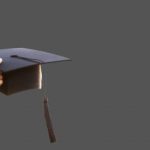The TOGAF framework stands as a robust guide, presenting a systematic approach to design, planning, implementation, and governance. TOGAF 9, the latest version at the time of writing, introduces crucial standards such as Business Architecture (BA), Data Architecture (DA), and Application Architecture (AA) through the Business Architecture Development and Architecture Development Method (ADM) stages. This article explores the intricate relationship between Business Data and Application Architecture (BDAT) and the ADM in TOGAF 9.
Understanding TOGAF Certification:
Before delving into the connection between BDAT and ADM, it is vital to recognize the significance of TOGAF certification. TOGAF certification is a validation of an individual’s skill in understanding and applying the TOGAF framework. Attaining this certification indicates a comprehensive grasp of the concepts, methodologies, and best practices outlined in TOGAF, allowing professionals to contribute effectively to organizational architecture projects.
In a similar vein, the ITIL Foundation Certification is critical in IT service management. It denotes a fundamental grasp of ITIL concepts and processes, which is required for aligning IT services with business objectives. The ITIL Foundation Certification provides a solid foundation for people interested in IT service administration and optimization.
The ADM Framework:
At the core of TOGAF 9 lies the Architecture Development Method (ADM), a structured approach for developing an enterprise architecture that meets business needs. ADM is comprised of iterative phases, each with unique goals and outputs, ensuring systematic development from business goals to implementation.
The BDAT Triangle in TOGAF:
Business Data and Application Architecture (BDAT) form a critical triad within the TOGAF framework, linking Business Architecture, Data Architecture, and Application Architecture seamlessly. The BDAT triangle is a conceptual model that highlights the interconnectedness of these three architectural domains, emphasizing the need for a holistic approach in enterprise architecture.
Also Read: Why Should You Go for PMP Certification?
Connection Points: BDAT and ADM:
Preliminary Phase:
In the Preliminary Phase of ADM, organization architects lay the foundation for the architecture development process. Here, the connection between BDAT and ADM becomes apparent as architects identify stakeholders and governance concepts, and contextualize the architecture effort within the organization’s strategic goals. BDAT plays a vital role in informing the initial decisions, providing insights into the business processes, data assets, and application landscape.
Architecture Vision (Phase A):
During the Architecture Vision phase, the focus shifts to defining the scope, identifying stakeholders, and organizing high-level goals. BDAT factors, including business capabilities, data requirements, and application dependencies, are integrated into the vision, providing a comprehensive understanding of the organizational landscape. This phase sets the stage for aligning business processes with architectural objectives.
Business Architecture (Phase B):
BDAT and Business Architecture share a symbiotic relationship during Phase B. Business Architecture, a component of BDAT, delves into business processes, organizational systems, and key capabilities. This information feeds into the development of a comprehensive business structure, aligning with the organization’s strategic goals. The result is a clear understanding of how business requirements drive data and application needs.
Data Architecture (Phase C):
In Phase C, architects focus on Data Architecture, a pivotal aspect of BDAT. Here, they define the company’s data requirements, including data entities, relationships, and standards. These specifications are vital for informing the next phases of ADM, ensuring that data considerations seamlessly integrate into the evolving architecture.
Application Architecture (Phase D):
The Application Architecture phase concentrates on defining the software portfolio and its interconnections. BDAT contributes by providing insights into business applications, their functionalities, and their integration requirements. This section ensures that the application landscape aligns with each business’s needs and incorporates data and application considerations from previous stages.
Opportunities and Solutions (Phase E):
BDAT continues to play a pivotal role in Phase E as architects assess opportunities and propose solutions. The interaction between Business Architecture, Data Architecture, and Application Architecture ensures that the proposed solutions are comprehensive, addressing business requirements while considering data and application implications.
Migration Planning (Phase F):
In Phase F, architects develop a detailed plan for transitioning from the current state to the target architecture. BDAT informs this process by offering a holistic view of the enterprise’s business processes, data assets, and application landscape. The migration plan considers dependencies and impacts on BDAT elements, ensuring a smooth transition.
Implementation Governance (Phase G):
BDAT and ADM converge in Phase G as architects establish and execute an effective governance framework. The governance model ensures that the implemented solutions align with the architectural vision and adhere to established standards. BDAT elements serve as reference points, guiding governance decisions related to business, data, and applications.
Architecture Change Management (Phase H):
The final phase, Architecture Change Management, focuses on managing and controlling changes to the architecture. BDAT elements provide a baseline for assessing the impact of changes on business processes, data assets, and applications. This iterative approach ensures that the architecture remains responsive to evolving business needs.
Also Read: Blooket Login: A Fun and Engaging Learning Experience
Conclusion:
In the intricate tapestry of TOGAF 9, the relationship between BDAT and ADM is essential. The interplay between Business Architecture, Data Architecture, and Application Architecture throughout the ADM phases ensures a holistic and coherent approach to enterprise architecture.
Professionals seeking TOGAF certification must grasp this symbiotic relationship to navigate the complexities of modern organizational landscapes successfully. In doing so, they not only enhance their skills but also contribute significantly to the success of enterprise architecture projects.

Techspurblog is a blog dedicated to providing industry-leading insights, tips, tricks and tools on topics such as web design, app development, Digital Marketing, Education, Business and more. We also provide reviews of the latest tech products and services that can help you get the most out of your business.






